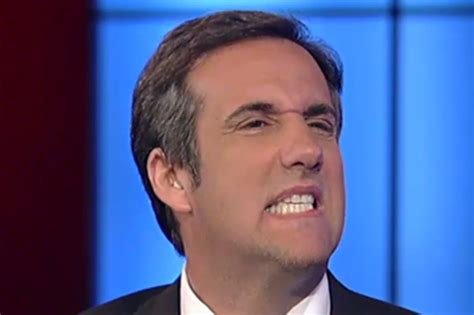Obama’s Debt Commission Releases Recommendations
Today the National Commission on Fiscal Responsibility and Reform, Obama’s deficit reduction panel,has released a 50-page draft proposal that includes recommendations intended to “stabilize then reduce the national debt”. These actions, if taken, would hopefully avoid a situation in 2020 where we will be paying $1 Trillion a year in interest.
Summary
The Co-chairs draft proposal puts some big ideas out there:
- Freeze all Government salaries (Federal Employees and Dept of Defense) for 3 years
- Slow increases in Federal spending
- Change cost of living adjustments to be the more moderate “Chained CPI” instead of the current inflation index
- A continuing increase in the Social Security retirement age to 68 near term and 69 by 2075
- Simplify the tax code and remove the most impactful deductions and credits
- Create just 3 individual tax rates and a single corporate rate
- Remove mortgage interest deduction on homes over $500,000, second mortgages or second residences
- Drop earned-income and child tax credits
- Permanently remove AMT, PEP and Pease provisions from the tax code
- Leaves Medicare alone but pushes cost savings onto Doctors and Lawyers
- Cut reimbursement to doctors for services
- Enact tort reform
- Increase the amount of income that can be taxed for the Social Security Trust Fund
- Reduction to the Defense Budget
- Cut overseas bases by 1/3
- Cut Defense contractors
- Cut the size of government
- Reduce federal employers by 10%
- Cut 250,000 government contractors
Breaking it Down
The report suggests that some changes to the tax code be made as well as slowing down the annual increases in federal spending must be performed and refers to the proposals as “shared sacrifice”. The draft posits that the recommendations achieve nearly $4 trillion in deficit reduction through 2020:
- 50+ specific ways to cut outdated programs and strengthen competitiveness by making Washington cut and invest, not borrow and spend.
- Reduces the deficit to 2.2% of GDP by 2015, exceeding President’s goal of primary balance (about 3% of GDP).
- Reduces tax rates, abolishes the AMT, and cuts backdoor spending in the tax code.
- Caps revenue at or below 21% of GDP and gets spending down to 22% and eventually to 21%.
- Stabilizes debt by 2014 and reduces debt to 60% of GDP by 2024 and 40% by 2037.
- Ensures lasting Social Security solvency, prevents projected 22% cuts in 2037, reduces elderly poverty, and distributes burden fairly.
To reach these goals, the report made five basic recommendations:
1. Enact tough discretionary spending caps and provide $200 billion in illustrative domestic and defense savings in 2015.2. Pass tax reform that dramatically reduces rates, simplifies the code, broadens the base, and reduces the deficit.3. Address the “Doc Fix” not through deficit spending but through savings from payment reforms, cost-sharing, and malpractice reform, and long-term measures to control health care cost growth.4. Achieve mandatory savings from farm subsidies, military and civil service retirement.5. Ensure Social Security solvency for the next 75 years while reducing poverty among seniors.
Tough Discretionary Spending Caps. Cut Domestic and Defense Spending
- Rolls discretionary spending back to FY2010 levels for FY2012, requires 1% cut in discretionary budget authority every year from FY2013 though 2015
- Discretionary Budget Authority (BA) indexed to inflation from FY 2015 through FY2020
- Discretionary spending would be $204 billion (16%) below the President’s budget and $127 billion (10%) below the CBO baseline in 2015 15
These spending caps will pull $88 Billion out of the budget in just 2012 as compared to President Obama’s proposed budget for that year. In 2015, the proposal will save $204 Billion when contrasted with the Obama administration’s spending plan which represents a 16.2% reduction in Discretionary spending.
To prevent the usual number-fudging that has been ever-present in Congressional finance, the caps are proposed to have a firewall between defense and non-defense spending. The proposl also moves Transportation Trust Fund spending to be mandatory instead of discretionary and prevents the movement of general revenues into the fund to rescue it from over-spending due to earmarks.
To reduce the cost of national security by $100 Billion, the report now proposes that Department of Defense salaries be frozen for three years, double Sec. Gates defense contracting cuts, cuts one-third of overseas bases, modernize Defense health care (tri-care), puts civilians in jobs where military are performing commercial activities, cuts R&D by 10%, puts military children into U.S. public schools, and integrates of the different branches retail operations (commissaries and exchanges).
Another $100 Billion in domestic spending will be achieved by reducing Congressional and White House budgets by 15%, freezing a federal salaries for three years, cut the federal workforce by 10%, eliminate 250,000 contractors, slow the growth of foreign aid, eliminate a number of Rural Utility Service programs, eliminate funding of commercial spaceflight, selling excess federal property.
Comprehensive Tax Reform
The Co-Chair’s proposal seeks to lower rates, simplify the code, include more payers, remove all spending in the tax code, improve compliance and make America more business-friendly while reducing the debt.
Three options for achieving these goals were presented in the draft.
Option 1 – “The Zero Plan”: Reduce the tax code to three individual rates (8%, 14% and 23%) if we take all spending out of the tax code (mortgage interest, child, and earned income tax credits) and a single corporate rate (26%) . If we keep all those credits in the code the rates would be 13%, 21%, 28% and the corporate rate would be 28%. AMT, Pease and PEP will all be eliminated either way. Capital gains and dividends are treated as ordinary income.
The report makes the case that we should eliminate tax expenditures/credits because the top 1% enjoy 13% of the benefits while the bottom quintile only see a 1%-7% benefit which makes them highly regressive in-nature.
Option 2 – “Wyden-Gregg Style Reform”: Repeal AMT, PEP and Pease, establish three fixed rates 15%, 25, 35%, triples the standard deduction ($15,000 for individuals, $30,000 for families), eliminate state and local tax deduction and several other itemized deductions (cafeteria plans), limit mortgage interest deduction to one residence and will not include interest on second mortgages or loans over $500,000. Limits on charitable deduction with floor at 2% of AGI, caps deductible for employer-provided health care coverage.
Reduces corporate tax rate to 26%, permanently extend the research credit and international tax reform.
Option 3 – “Tax Reform Trigger”: Ask Finance, Ways and Means Committees and Treasury to develop and enact reform by end of 2012. Across the board cut for itemized deductions, empluyer health exclusion, and general business credits that are due to start in 2013 if no reform is enacted. Cuts should increase over time. Gradually increase gas tax (15 cents in 2013) to fully fund transportation spending. Adopt chained CPI to correct for government over-statement of inflation.
Because options one and two eliminate PEP, Pease and AMT they are the two best options for simplifying the tax code. PEP and Pease are provisions that phase out individual deductions relative to income and AMT is the alternative minimum tax that was intended to prevent wealthier tax payers from paying too little. By instating a simpler rate structure these laws are unnecessary.
Reducing Health Care Costs
The proposal puts the onus of reducing health care costs on providers and lawyers. They intend to pay doctors and hospitals less while also adopting comprehensive tort reform to reduce defensive medicine.
Mandatory Savings
Switch to chained-CPI for all indexed programs which will slow the growth of federal spending where cost of living raises are given. Reduce farm subsidies by $3 Billion per year.
A reform of Military and Civil service retirement payments. The highest 5 years of income will be used to calculate civil service pensions, federal workers will contribute 1/2 the cost (an increase from the current 1/14th), reform of the cost of living adjustments for civilian and military early retirees. Military retirees cannot collect until age 60.
The plan eliminates in-school interest subsidies for student loans. This subsidy is where the Federal government pays the interest on student loans while the person in enrolled in school.
Reforming Social Security
For the “working poor”, the draft proposes a new wage-indexed minimum benefit to keep those who earned minimum wage their whole lives above the poverty level.
Provide a benefit boost to older retirees who may outlive their other sources of income.
Reduce payments to those above the 50th percentile in lifetime income. Increase the retirement age by one month every two years after it reaches 67 under current law. This would make the retirement age 69 by roughly 2075 but also provides a hardship exemption for anyone unable to work past 62.
Apply the chained-CPI to Social Security cost of living adjustments.
To improve the revenue side of Social Security the draft proposes to include newly hired state and local workers in Social Security after 2020 and increase the amount of income that can be taxed for Social Security. This will remove the Social Security tax exemption that several Federal employee groups have enjoyed and increase the amount paid in by higher earners.
What is Chained CPI
This term is mentioned in several of the proposals. The Congressional Budget Office explains it this way
Many federal programs and parts of the tax code are currently indexed to increases in the consumer price index (CPI), a measure of inflation calculated by the Bureau of Labor Statistics (BLS). According to many analysts, however, the CPI overstates increases in the cost of living because it does not fully account for the fact that consumers generally adjust their spending patterns as some prices change relative to other prices.
Basically, as things get more expensive, people adapt and buy generics or sale items which effectively lowers the amount of money they spend on every day products. The CBO purports that this will more-properly index for inflation.
Status of the Draft
Today’s release comes in the form of the Co-Chair’s recommendations and are not the final recommendations from the full panel. To make the final draft, 14 of the 18 panel members must vote to accept the individual initiatives to make the final report which is due December 1st. To actually enact them, it will literally take an act of Congress.




